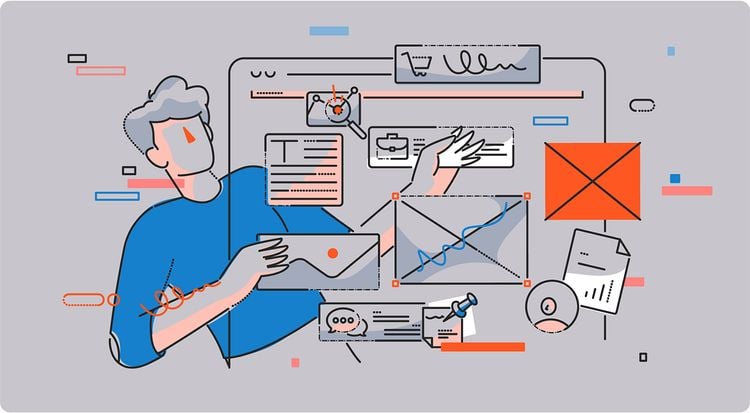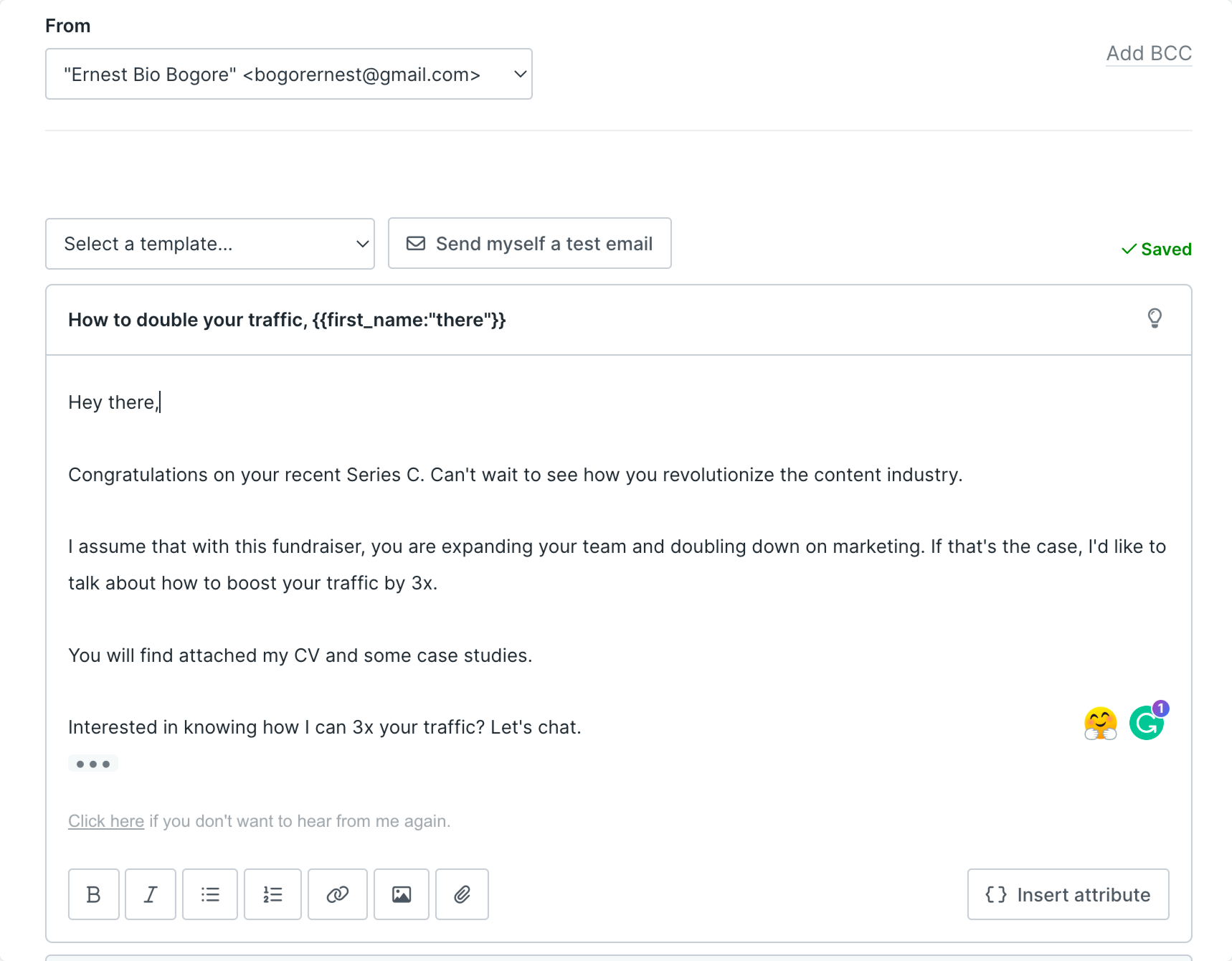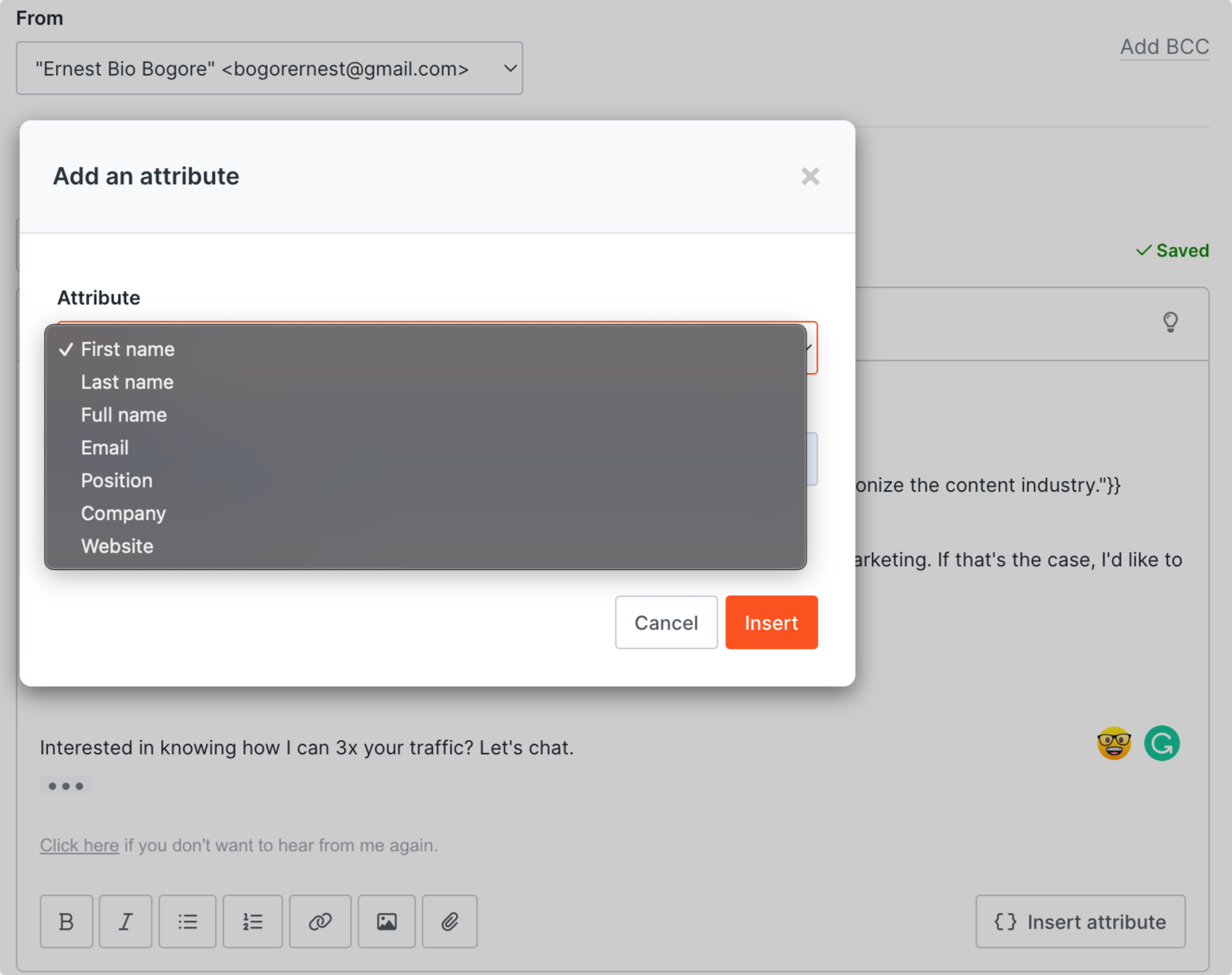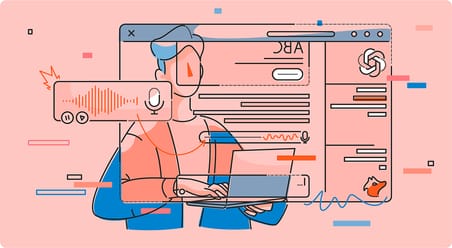8 Email Personalization Tactics You Need to Start Using

The average B2B office worker receives about 96 emails every day.
The battle for prospects' attention is relentless, and attracting customers via email outreach is increasingly challenging.
So amidst this email hustle and bustle, prospects want relevant, personalized content when they scroll through their inboxes—otherwise, they won't open the emails.
Prospects need messages tailored to their unique characteristics and challenges. Also, they need proof that you took the time to research them before sending an email and that it’s not just another email blast.
In this blog post, we'll explain what a personalized email is and show eight email personalization strategies you can use to grab your prospects' attention.
What is email personalization?
Email personalization involves tailoring an email message to a recipient by using relevant information about them. It allows you to target prospects with tailored offers and messaging to improve engagement.
Depending on the data you collect and the information you use to personalize your emails, personalization can be thought of as basic or advanced.
- Basic email personalization involves using basic data like a prospect's first name, location, job title, or company name in your emails.
- Advanced email personalization requires more research and involves learning more about your prospects’ habits, needs, pain points, and challenges.
Benefits of email personalization
Email personalization provides a tailored experience for your prospects and can improve your engagement rates significantly.
Improve open rates
Personalizing your email’s subject line can provide a significant boost to open rates. It helps pique your recipients' interest and instills a sense of trust that will lead them to open your email, even if they don't know you.
A personalized subject line highlights the promise of targeted value, making recipients want to check out the email and see what you have to say.
Get more replies
Studies have shown that personalized emails get 142% higher reply rates compared to non-personalized ones.
Personalization allows you to talk about things recipients care about and adapt your message to them. As a result, your content is valuable, and prospects are much more likely to reply.
Drive more revenue
According to Campaign Monitor, personalized email campaigns drive 760% more revenue compared to non-personalized ones.
This makes sense — if your emails contain messaging and offers that are relevant to your prospects and personalized for them, they’ll be much more likely to convert.
Before you start
There are a few things you should do before trying to personalize your emails. Let’s go through these one by one.
Research your prospects
To personalize your emails, you first need to learn as much as possible about your prospects.
Check out their LinkedIn profile and read their posts to see what’s on their mind. Be sure to look beyond their posts and recent activities.
Check out mutual connections and groups, read their work experience and recommendations, and learn about their unique skills to understand more about them and have more information to spark a conversation.
You can also visit their company's LinkedIn page to find out more about what they do and the current state of the company.
Additionally, you can visit the prospect’s personal website (if they have one) and find out what they’re passionate about.
Enrich your data
Effective personalization requires accurate data. You can use data enrichment platforms like Clearbit and Captain Data to enrich prospect data. These are web-based data intelligence solutions that display contextual data about customer interactions.
For example, Clearbit can integrate with your CRM to pull up all the social accounts of a specific prospect you want to target. It also provides firmographic data about a company's funding, location, size, and industry.
This information will help you understand your customers better and allow you to personalize your emails more effectively.
8 ways to personalize your next email
Now that we have gone over all the fundamentals of email personalization, let's discuss the main tactics you can use to personalize your emails and drive engagement to ensure your emails are opened, read, and replied to.
1. Personalize the subject line
Subject line personalization directly impacts open rates. Research shows that emails with personalized subject lines get 50% higher open rates.
There are several ways you can personalize the subject line for your emails. For example, you can mention the prospect’s:
First name or the name of their company
Your prospects receive a lot of emails daily, and those that mention their name or the name of their company can capture their attention more easily.
Pain points
One of the most effective ways to get people to listen to you is to talk about something they’re struggling with.
That’s how mentioning pain points in the subject line works. It illustrates your familiarity with the prospects’ challenges.
Interests
Use the information you gathered about your prospect to create a unique subject line that mentions something they care about. This will grab their attention and show that you’ve done your research.
2. Compliment their work
You can also personalize a cold email by complimenting the prospect’s work. You’ll need to research the prospect better to do this.
For example, you can check their LinkedIn page and leverage data from their work experience, recommendations, honors, awards, etc.
Or, you can check their company achievements and mention how they participated in them.
Here are a few examples:
- I just read your post about {{topic}}, and it knocked my socks off!
- It's so great to see that you have accumulated all this experience over the years, helping so many companies to grow. Your career path is impressive.
- Your work experience with {{company name}} is very inspiring. Congratulations on your fifth anniversary as VP of Marketing at {{company name}}.
Interestingly, this works exceptionally well as the first line of your email and offers a great way to break the ice if the prospect doesn't know you.
It can also serve as the preview text and attract the reader's attention to read the full email.
3. Congratulate them on a recent achievement
Another personalization technique is to start your email by congratulating the prospect on a recent achievement.
It can be a personal achievement or that of their company. This can be a great touchpoint to capture their attention and start a conversion.
Here are a few examples:
- Congratulations on your new role as {{position}} at {{company name}. You're charting an impressive career path. Keep up the excellent work.
- Congratulations to you and your team for {{company name}}’s 10th anniversary. I hope you played the piano at the party.
- Congratulations to you and the {{company name}} on your recent IPO. That’s an incredible milestone. Bravo!
4. Mention a mutual acquaintance
If you and the prospect have a mutual acquaintance, mentioning them can be a great icebreaker and a way to build rapport quickly.
If you are close with a mutual acquaintance, it’s even better if you can get them to introduce you to the prospect.
A mutual acquaintance can be a professional friend you have in common, a shared LinkedIn connection in your industry, a close teammate, or even an influencer you both look up to.
Here are a few ways to personalize the subject line by mentioning a mutual acquaintance:
- {{mutual acquaintance}} thinks we should talk
- {{mutual acquaintance}} said XYZ about my ABC implementation
- {{mutual acquaintance}} just tweeted about {{your company name}}
You can also mention the mutual acquaintance in the email copy:
- {{mutual acquaintance}} mentioned that we shared a [passion for/interest in/experience with] {{shared interest}} and said you'd be a great person to get to know.
- {{mutual acquaintance}} just recommended my services to his team and asked to hire me internally to help his team implement XYZ. So, I thought since you also care about {{shared pain point}}, you’d like to hear more about it.
5. Show interest in their hobbies
A lot of people share their hobbies on social media.
If you can find out what hobby a prospect is into, showing that you know something about the hobby or appreciate it can be an excellent way to get the prospect’s attention and develop rapport.
Here’s an example:
- You speak five languages? That's pretty impressive. I'm still struggling with my third (Mandarin). I'm a big fan.
6. Talk about their pain points and goals
If you’ve done your research, you should know your recipient’s current pain points and goals.
Mentioning these in your email is a surefire way to get the prospect’s attention. Also, your ability to talk about the challenges your prospect faces is how they will assess the value of your offer and email altogether.
So, if you do this right, it’s a win from the beginning.
You should ensure that whatever pain points or goals you decide to talk about align with your solution and the overall content of the email.
Here’s an example:
- I just did XYZ for {{client name}}, which helped improve their website’s conversion rate by 30%. Is this something you’d like to see happen at {{company name}}?
7. Take advantage of image personalization
Simply including an image in your email is a great way to stand out and grab your prospects’ attention. But an image will be even more effective if it’s personalized.
If you’re sending just a few emails, you can personalize each image manually. However, if you’re reaching out to many prospects, manually creating each image would be too time-consuming.
In that case, you can use solutions such as NiftyImages to automate the process.
8. Automate email personalization
Personalizing a large number of emails manually is too time-consuming to be worth your time.
You need to be able to create a personalized experience for different groups and individuals while sending email campaigns. Luckily, you can automate email personalization using a tool like Hunter Campaigns.
It allows you to personalize emails at scale by adding personalization tags to your email copy and having them updated automatically based on data you have on your prospects.
This way, you get a personalized email for each of your recipients.
Here’s how to do it:
Go to Hunter Campaigns. Connect your Gmail or Outlook account.
On the next screen, click the +New campaign button.

Then, add your email content.

Click on {} Insert attribute. Choose an attribute and add a fallback phrase Campaigns can use if data for some of the prospects on your list is missing.

Finally, click the Insert button.
Use email personalization to drive more revenue from your campaigns
There are countless ways to personalize your emails, both in the subject line and the email body. It all comes down to your ability to research your prospects and find relevant and accurate information that will be useful.
So, take the time to research your prospects thoroughly and gather as much information as possible. You can also use data intelligence software to speed up the process.
Want to learn more about creating effective cold email campaigns? Check out these guides:
- Cold Email Guide
- 12 Email Copywriting Tips to Help You Create High-Converting Emails
- 89 Effective Cold Email Subject Lines & How to Craft Them



 Send cold emails with Hunter
Send cold emails with Hunter